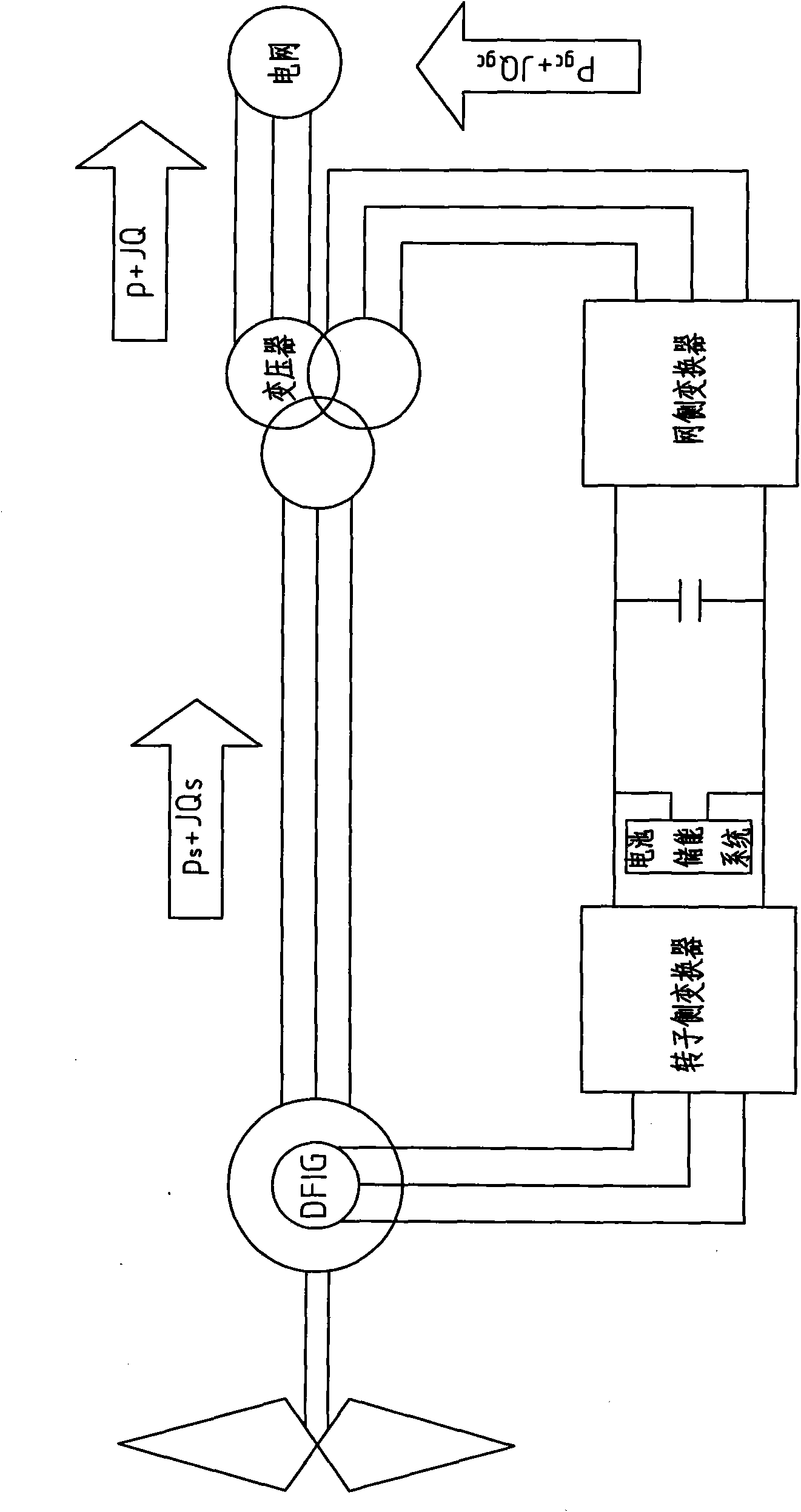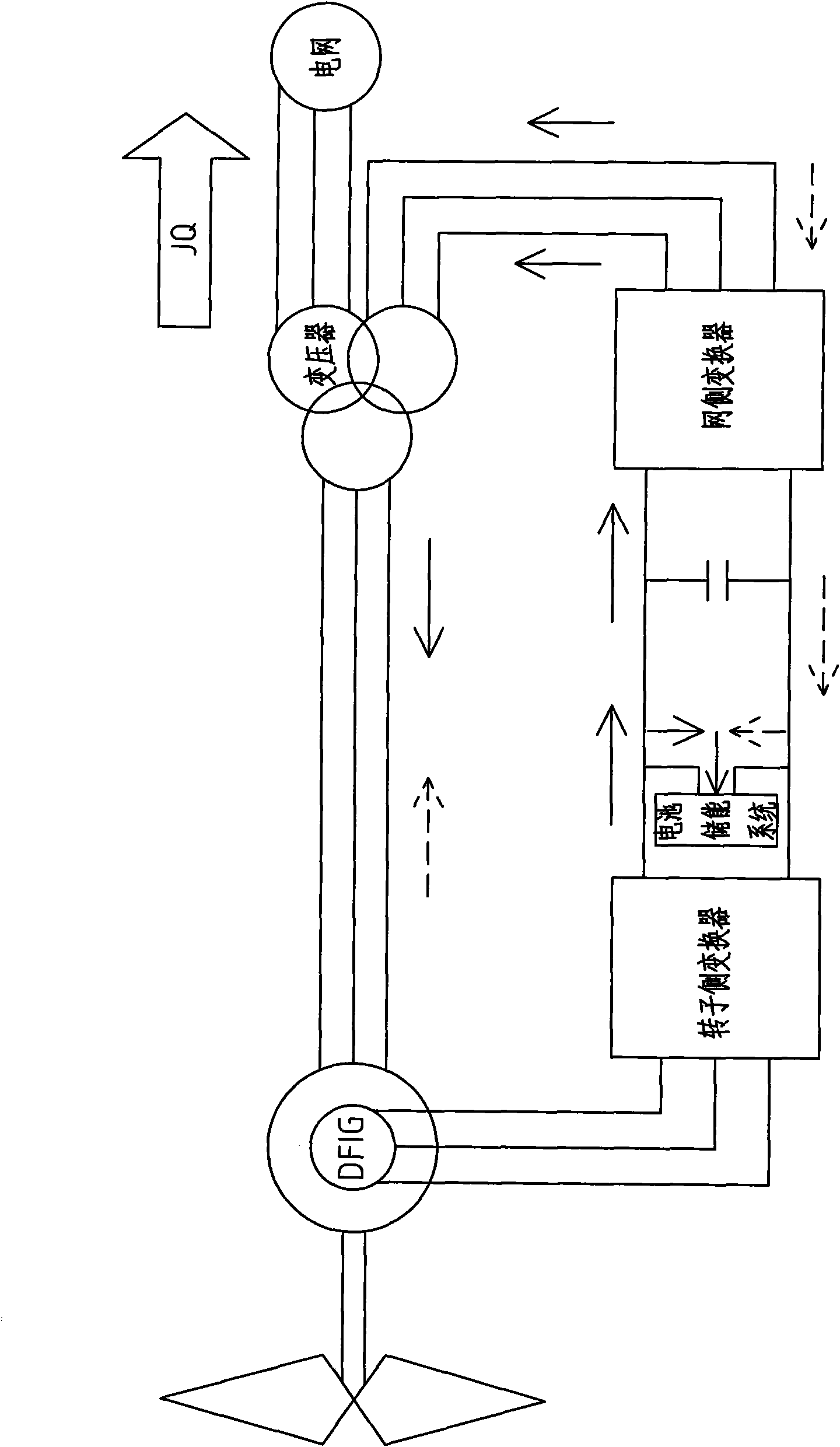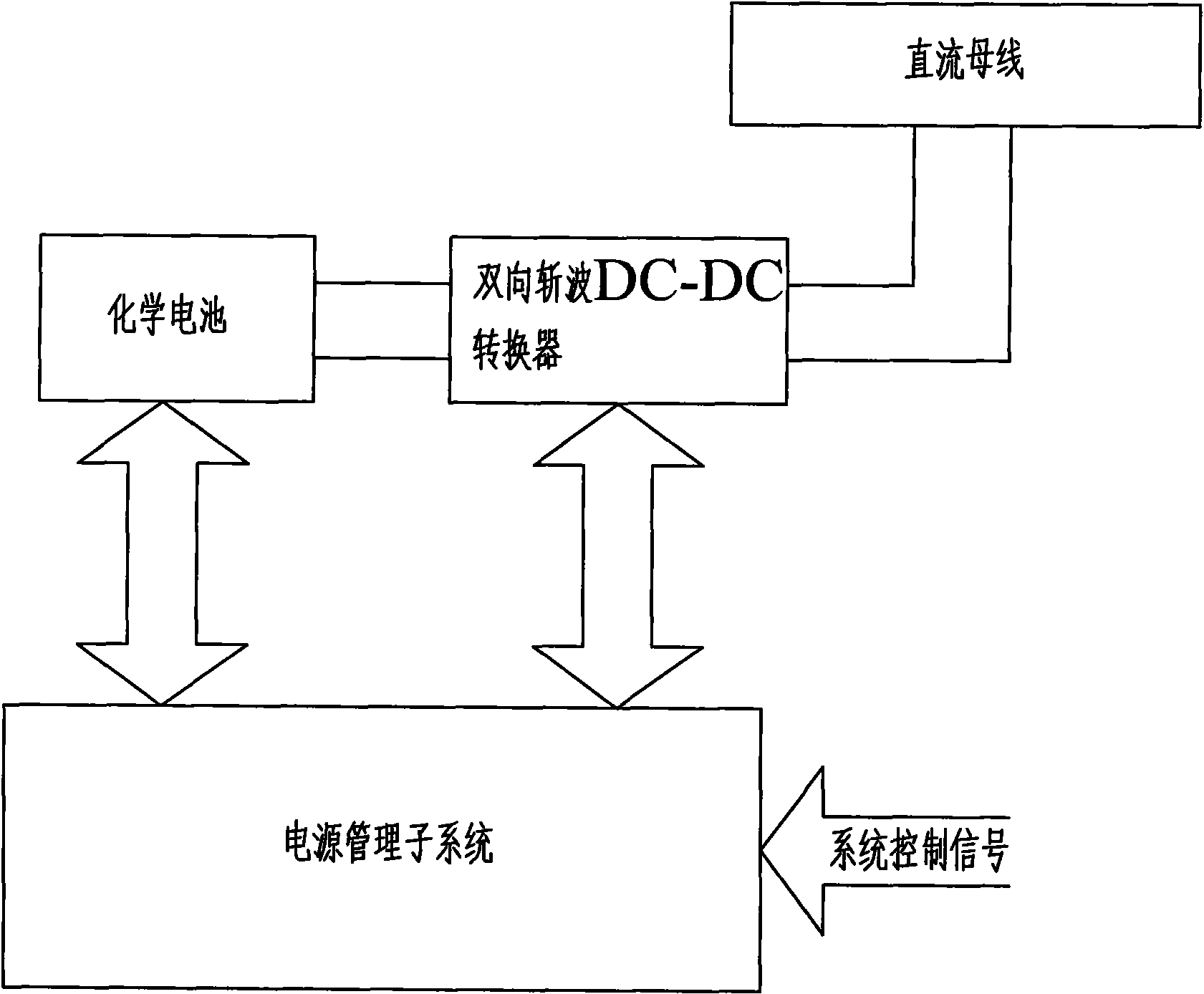Energy storage method for double-feed current transformer
A technology of doubly-fed converters and energy storage methods, applied in the field of power systems, can solve problems such as grid voltage stability deterioration, failure to recycle, system transient impact, etc., to improve the difficulty of grid connection, improve safety and reliability Performance, power quality improvement effect
- Summary
- Abstract
- Description
- Claims
- Application Information
AI Technical Summary
Problems solved by technology
Method used
Image
Examples
Embodiment Construction
[0013] The present invention will be further described below in conjunction with the accompanying drawings of the description.
[0014] Such as Figures 1 to 3 As shown, an energy storage method for a doubly-fed converter, the doubly-fed converter includes a rotor-side converter and a grid-side converter, the DC terminal of the rotor-side converter is connected to the DC terminal of the grid-side converter, The AC end of the rotor-side converter is connected to the rotor of the double-fed generator set, and the AC end of the grid-transfer converter is connected to the stator of the double-fed generator set, and the stator of the double-fed generator set is connected to the power grid through a transformer; The feature is that a battery energy storage system is installed between the rotor-side converter and the grid-side converter, and when overcurrent and overvoltage on the rotor side are detected, the main control unit of the system controls the reverse rotation of the rotor-...
PUM
 Login to View More
Login to View More Abstract
Description
Claims
Application Information
 Login to View More
Login to View More - R&D
- Intellectual Property
- Life Sciences
- Materials
- Tech Scout
- Unparalleled Data Quality
- Higher Quality Content
- 60% Fewer Hallucinations
Browse by: Latest US Patents, China's latest patents, Technical Efficacy Thesaurus, Application Domain, Technology Topic, Popular Technical Reports.
© 2025 PatSnap. All rights reserved.Legal|Privacy policy|Modern Slavery Act Transparency Statement|Sitemap|About US| Contact US: help@patsnap.com



